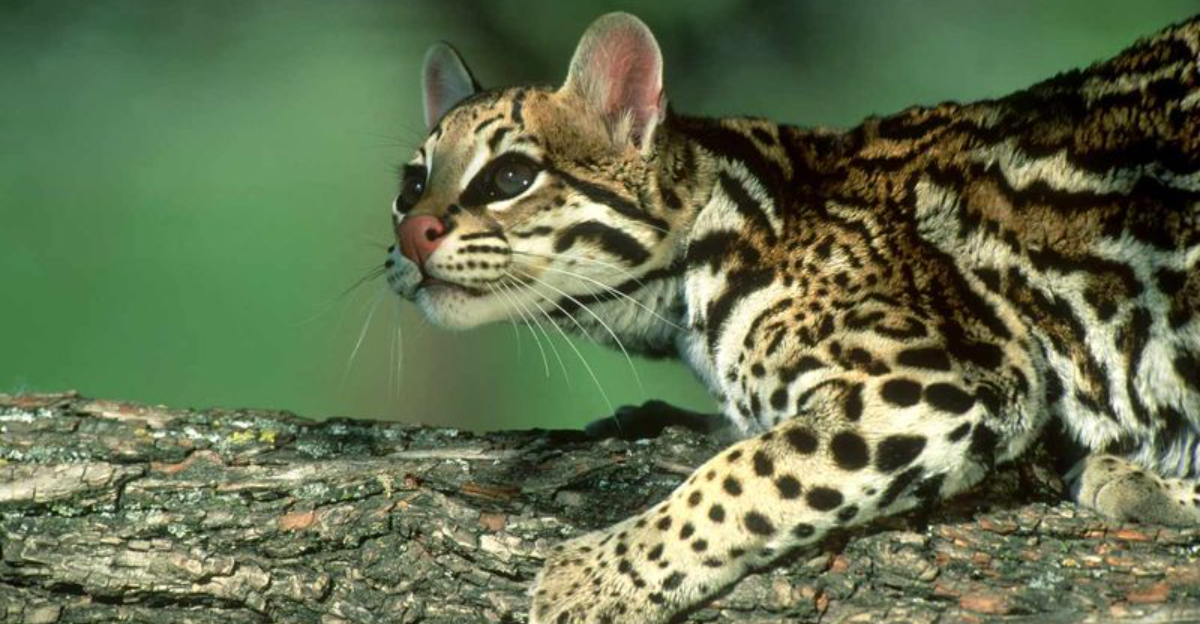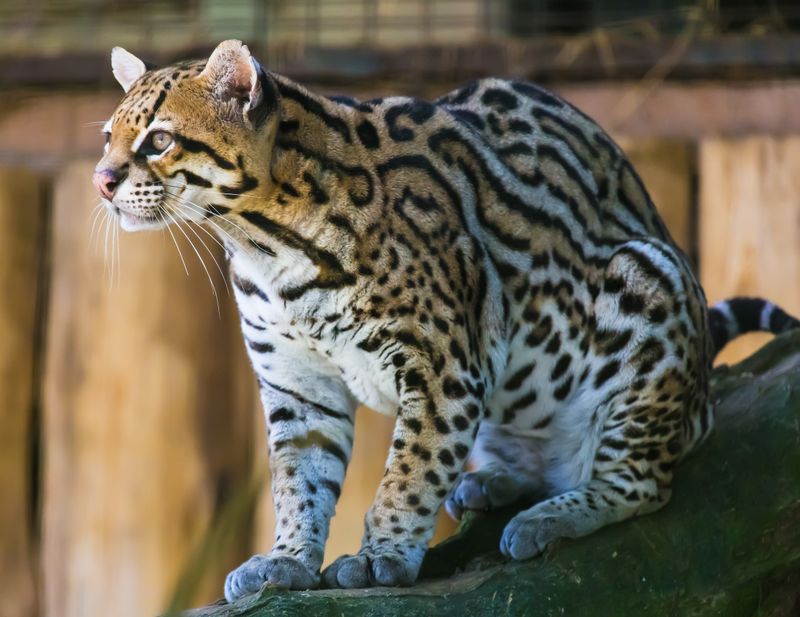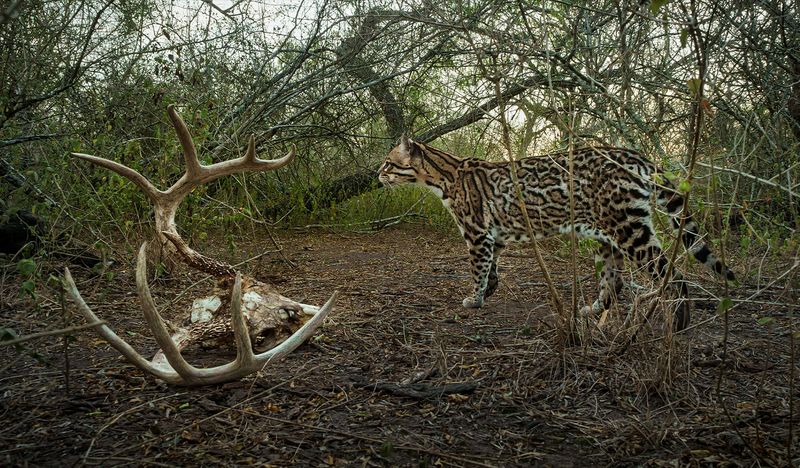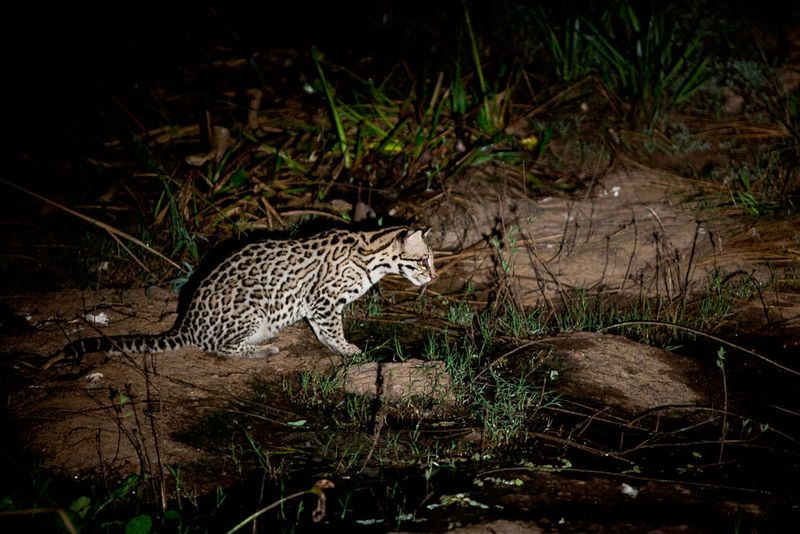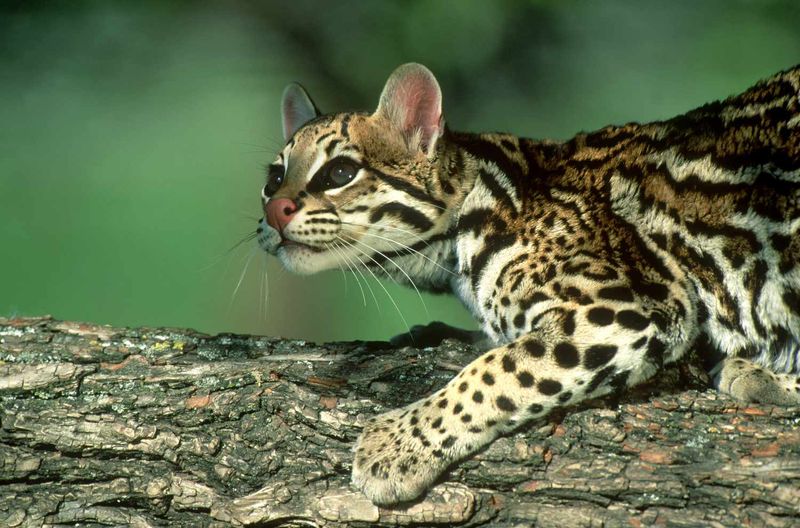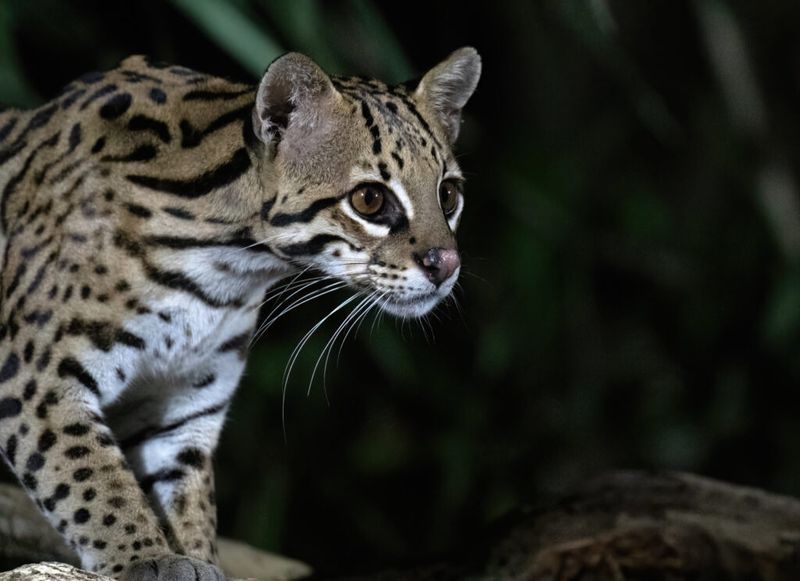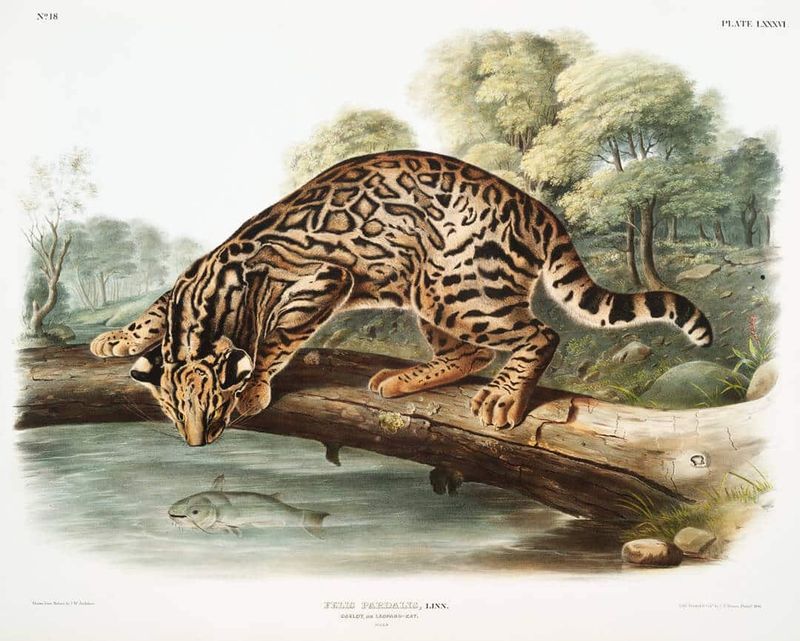📖 Table of Content:
The ocelot, often dubbed as the “jaguar’s smaller cousin,” is a captivating wild cat native to the Americas. With its exquisite coat adorned in black spots and rosettes, the ocelot is a master of disguise in its diverse habitats, which range from lush rainforests to sparse thornscrub regions. Although it shares its habitat with larger felines, the ocelot’s unique characteristics and behaviors set it apart as a species worthy of admiration and conservation efforts. Understanding this elusive creature not only enhances our appreciation but also underscores the importance of preserving its natural environment.
1. Physical Characteristics of the Ocelot
With a sleek, athletic build, the ocelot stands as a testament to the adaptability of nature. Measuring between 28 to 35 inches in body length and weighing 15 to 35 pounds, this feline is designed for both agility and stealth. Its coat, a mesmerizing blend of golden to grayish hues, is decorated with unique black spots and rosettes, a natural masterpiece tailored for camouflage. These markings are not just decorative but functional, allowing the ocelot to seamlessly blend into its environment, evading predators and approaching prey undetected. The ocelot’s large expressive eyes and rounded ears complement its overall grace, enhancing its sensory capabilities, which are crucial for its nocturnal lifestyle. This combination of beauty and function makes the ocelot a remarkable example of evolutionary design.
2. Ocelot Habitat and Distribution
The ocelot’s habitat spans a wide range of environments, displaying its remarkable adaptability. Found from southern Texas in the United States to northern Argentina, these cats thrive in dense vegetation, including rainforests, mangrove swamps, and thorn forests. In the U.S., their presence is primarily confined to the Lower Rio Grande Valley, where fewer than 100 individuals remain, marking their endangered status in this region. This diverse range highlights the ocelot’s ability to survive in both lush and sparse environments, depending on the availability of cover and prey. Conservation efforts in these habitats are crucial, not only to protect the ocelot but also to maintain the ecological balance where they play a vital role as predators, controlling the populations of smaller animals.
3. The Nocturnal Lifestyle of the Ocelot
Primarily nocturnal, the ocelot is an expert in the art of night hunting. With sharp vision and acute hearing, they navigate the dark with stealth and precision, preying on a variety of animals including rodents, birds, and reptiles. Their solitary nature is a testament to their self-sufficient lifestyle, rarely seen in pairs except during mating season. The night provides a veil for these elusive cats, allowing them to capitalize on their sensory advantages to outsmart prey and avoid larger predators. This lifestyle not only showcases their adaptability but also emphasizes their role as efficient carnivores in their ecosystems. The ocelot’s nocturnal habits are a fascinating aspect of their existence, reflecting a life finely tuned to the rhythm of the night.
4. Diet and Hunting Techniques
The ocelot’s diet is as varied as its habitat, showcasing its adaptability as a predator. With a menu that includes small mammals, birds, and even fish, the ocelot employs a range of hunting strategies tailored to different prey. They use stealth and patience, often stalking their prey under the cover of dense foliage before a swift, calculated pounce. This method of hunting reflects their opportunistic nature, as they capitalize on the element of surprise. The adaptability of their diet plays a significant role in their survival, allowing them to thrive in diverse environments. This flexibility is a testament to their evolutionary success, highlighting their ability to maintain a balanced diet in ever-changing ecosystems.
5. Reproduction and Family Life
Ocelot reproduction is both fascinating and critical for their survival, with mating occurring year-round. The gestation period lasts around 79 to 85 days, resulting in the birth of typically one to three kittens. These young ocelots remain with their mother for up to two years, during which they learn essential survival skills, such as hunting and territory marking. This period of extended maternal care ensures that the young are well-equipped for independent life. The mother’s role is pivotal, as she imparts the necessary knowledge and skills to her offspring, ensuring the continuation of the species. The bond between mother and kittens highlights the importance of nurturing in the wild, where survival skills are passed down through generations.
6. Conservation Status and Threats
While the ocelot is listed as “Least Concern” globally by the IUCN, specific populations, especially in the United States, face severe threats. The primary challenges include habitat loss due to urban development, agriculture, and infrastructure projects, which have drastically reduced their numbers, particularly in Texas. This decline highlights the need for targeted conservation efforts to protect these cats and their habitats. Conservation programs focus on habitat restoration and creating wildlife corridors to ensure genetic diversity and population stability. The ocelot’s plight serves as a reminder of the broader environmental issues at play, emphasizing the interconnectedness of ecosystems and the crucial role each species plays in maintaining ecological balance.
7. Cultural Significance and Human Interaction
Throughout history, the ocelot has held cultural significance, especially among indigenous peoples of the Americas, where it was often revered in art and mythology. Known for its beauty and enigmatic nature, the ocelot has inspired numerous legends and stories, symbolizing agility and mystery. Its depiction in ancient art reflects a deep respect and admiration, a testament to its impact on human culture. Despite its elusive nature in the wild, the ocelot has occasionally been kept as an exotic pet, though this practice poses significant ethical and conservation challenges. Human interaction with ocelots underscores the importance of respecting and preserving their natural habitats, ensuring that these majestic creatures remain a vibrant part of our world’s biodiversity.
